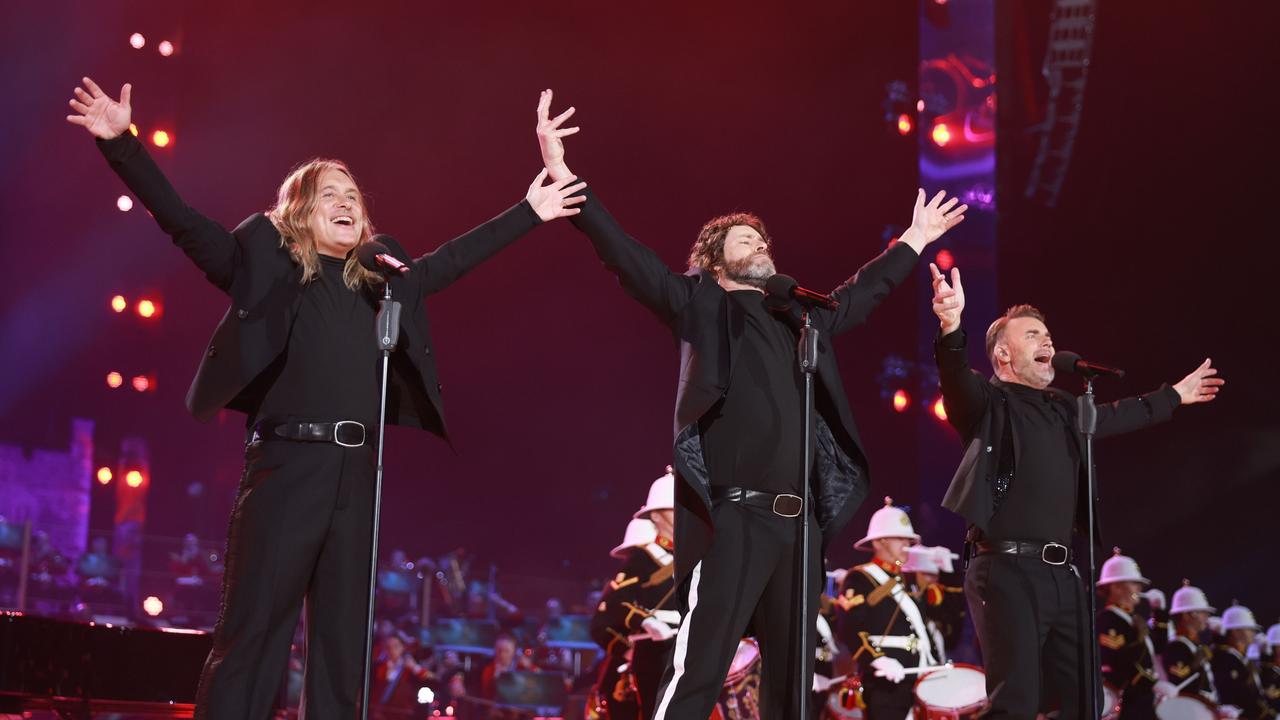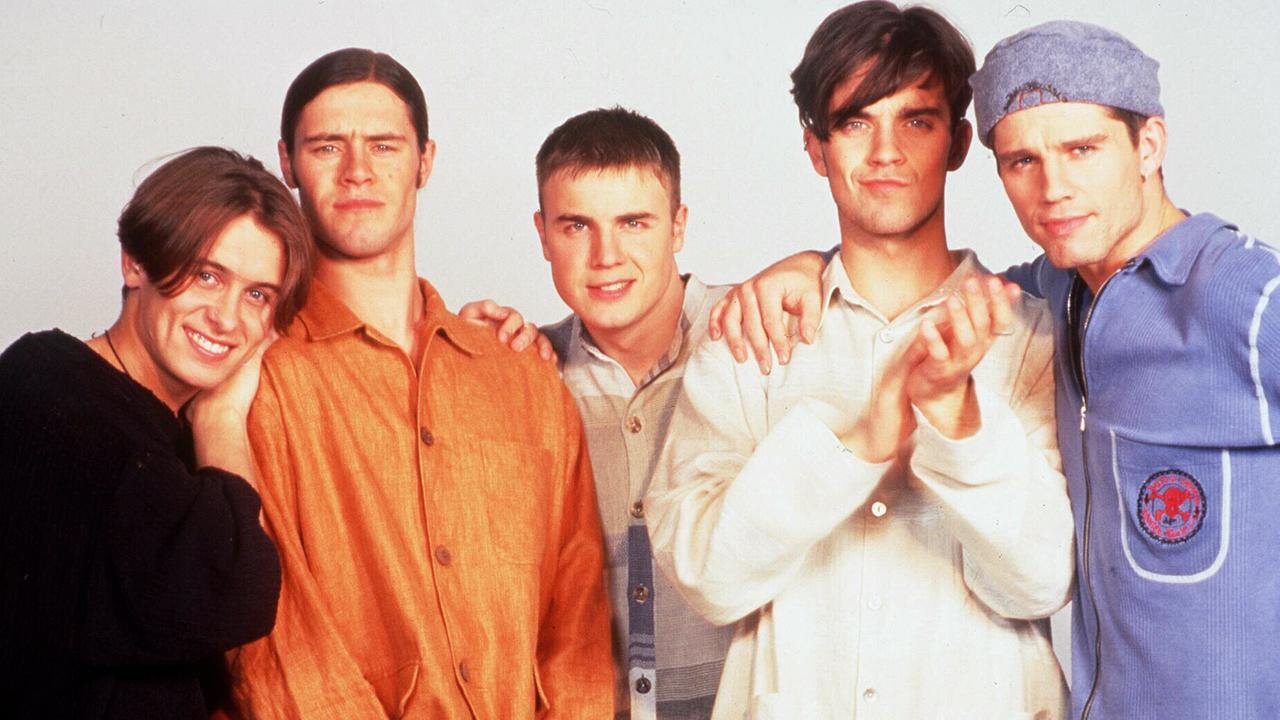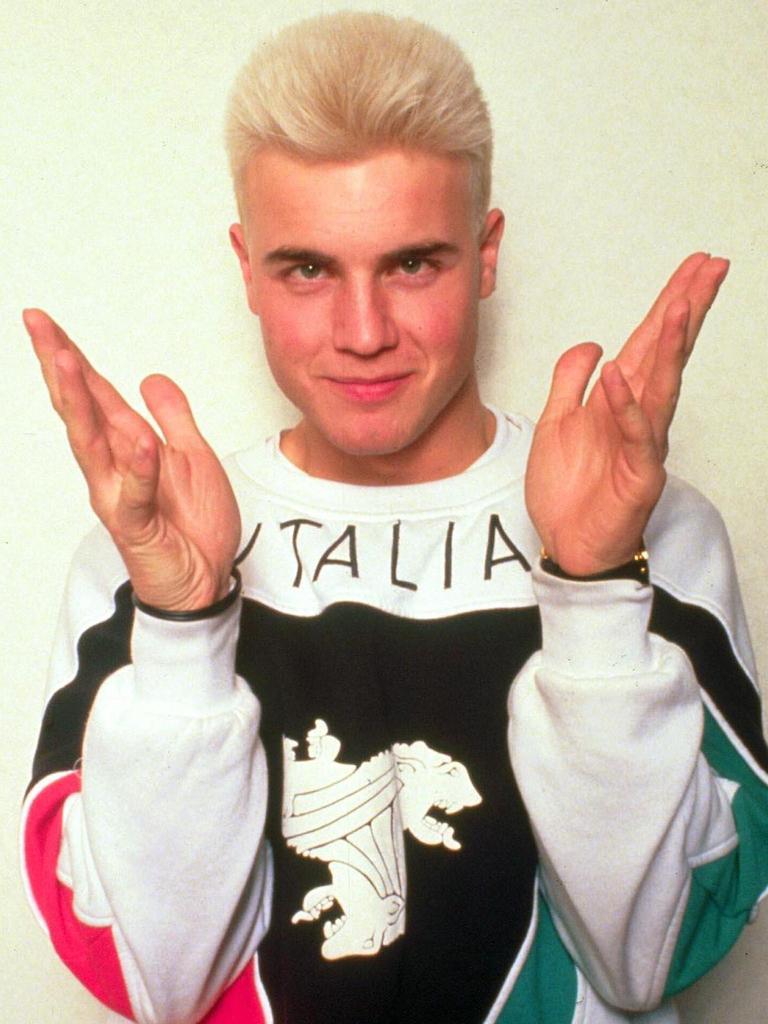Take That star Gary Barlow reveals the move that ‘saved’ the band
Take That singer Gary Barlow tells news.com.au about the group’s incredible comeback could only take place after one huge change.

Take That were officially the biggest British boy band of the 1990s, with a string of hit singles at home and here in Australia – including the Aussie number one Back For Good.
But in this country, we’ve been less exposed to the group’s incredible second life; when they reformed in 2006 after a ten-year break, Take That were somehow suddenly bigger than they’d ever been.
Comeback album Beautiful World sold nearly three million copies in the UK alone, and since then, they’ve survived several line-up changes to far outdo the success of their original run, with massive tours, millions in album sales and multiple number one singles.
Founding band member Gary Barlow was in Sydney this week, ahead of Take That’s newly-announced November Australian tour (their first visit since 2017). I spoke to him about how the band’s hugely successful second act came about – and the one huge change they made for the reunion to keep Take That from falling apart again.

It’s crazy to think Take That were initially together for only six years, and you’ve been back together for close to 20. Your 2006 reunion single Patience felt like a pivotal moment - the top YouTube comment on the video calls it “probably the greatest comeback song ever.”
It was a massive moment for us, and we didn’t really know what we had at that point. There had been a TV show (2005’s Take That: For The Record) made that was basically saying, “Where are they now, these guys?” That had such a massive response, but we hadn’t been on stage together for nine years. So we went off to try and write some songs, and in our first trip, someone was looking down on us and gave us that song: Patience. It just wrote itself in about 10 minutes. It was a real moment for us; the stars aligned. The single came out, the album came out and we were basically back.
Looking back at it now, it’s really the gold standard for a pop group reunion – somehow, you were even bigger than you had been in the 90s.
We were playing bigger venues. It was just amazing. No one saw it coming, least of all us. And I guess when those things happened, you just have to chase it. And we did. We carried on, made more music, and it’s just been a dream.

You wrote the majority of Take That’s 90s songs by yourself, whereas post-reunion the songwriting credits have been split evenly among the group. Why the change?
I think that change saved us, it really did. When we left in the 90s, we left as boys, but when we came back, we came back as men. It was like: “Look, I can go away and write it all, but why don’t we all do it? Because I promise you, if you try and get your own things in there, you’ll feel much more a part of it.” And so we did: We made a record that everyone felt proud of. Even to this day, I think that things being split equally is the only way.
It seemed like the band reached its zenith around 2010’s Progress: Robbie Williams rejoined, and you embarked on an enormous stadium tour featuring a giant, 100-foot robot that came to life through the course of the show. Did it feel like that was as big as Take That could possibly get?
We knew we’d gone beyond the realms of … sense! On a nightly basis, we used to look up and think: How the hell did we get here? It was fabulous. But I think once Rob came back, the story was complete. We’d come full circle. I think mentally as a band, we knew this was the top, so we enjoyed it and there was no pressure really. We just went and played all those gigs.
It was a very high-tech show – did anything ever go wrong?
I’ll be honest, that show was a pain in the ass. So much to worry about and places to stand and be. It was a lot. We’ve done every type of show, but at that level, when you’re playing those size of stadiums, you’ve got to give the audience a big show. And it is tricky. There were 190 people working on that show, a massive crew. It was mind blowing - but we did it. We got through it.


After that tour came another pivotal moment for the band: Robbie left again, then so did Jason Orange. Suddenly, Take That were a trio. Did you think that might be the end again?
Absolutely. If it was just four going to three, that would’ve been okay. And we’d known from the start that Rob was only back with us for one album. But the fact that then Jason said, “I don’t want to do this,” it was like: Oh, are we going to be laughed at? But as usual, rather than think too much about the image, we said, let’s go make some music. Let’s see if the music can tell us. And so we came back with this song These Days.
Another UK number one – do you think that was the key to showing you were viable as a trio, coming back with a great song?
I actually do. I could be completely wrong here, but people keep talking about TikTok and how the world’s changed and it’s all about streaming now … But you still need a good song, sung nicely, with a nice message. And those will never change, those fundamental things, I think.
And now a decade on from These Days, Take That have been a trio longer than any other iteration of the line-up. How are things different to earlier eras of the group?
You know what, this is the most chilled version of Take That. There’s three of us, so it’s one or two less people to worry about or move around or an opinion to take into account. It’s such a happy place to be right now. And Mark and Howard are my oldest friends, they’re so lovely. They’re so nice. There’s no egos from anyone.

Before the group reformed, you co-wrote six songs on Delta Goodrem’s debut album Innocent Eyes. What do you remember of that time?
I was in a bit of a sabbatical at the time. The band had split up, I’d tried solo stuff, it hadn’t worked, and I’d lost my deal. I was sat around the house blaming everybody else, eventually blaming myself and then eventually going: I really miss music.
With Delta, I think everybody knew she was special. She had something different, even at 15. She came to Manchester and we had her for two weeks on that first trip. I think we wrote six songs or something, very quickly. That musical connection with her … it just worked.
Would the two of you work together again?
I’d love to! Tell her. But she doesn’t really need people like me nowadays … She’s better just doing it herself. She doesn’t need anybody.
Take That’s This Life On Tour Australian / NZ dates are as follows:
• Wednesday October 30: RAC Arena, Perth, with Sophie Ellis-Bextor
• Saturday November 2: Peter Lehmann Wines, Barossa Valley, SA, with Ricki-Lee
• Wednesday November 6: Rod Laver Arena, Melbourne, with Sophie Ellis-Bextor
• Thursday November 7: Qudos Bank Arena, Sydney, with Sophie Ellis-Bextor
• Saturday November 9: Bimbadgen winery, Hunter Valley NSW, with Ricki-Lee
More Coverage
• Sunday November 10: Sirromet Wines, Mount Cotton QLD, with Ricki-Lee
• Thursday November 14: Spark Arena, Auckland NZ, with Sophie Ellis Bextor.
General tickets go on sale 1pm local time on Tuesday February 13 via Ticketek (arena shows), Ticketmaster (NZ show) and A Day on the Green (winery shows).






